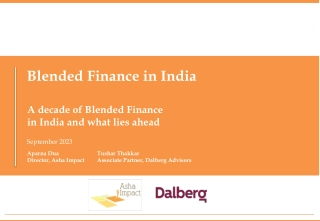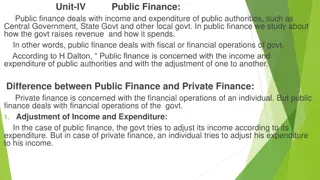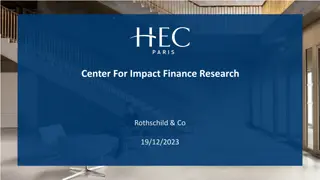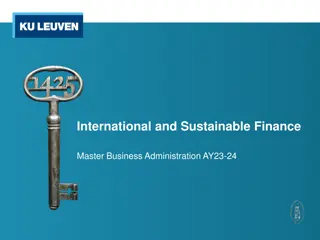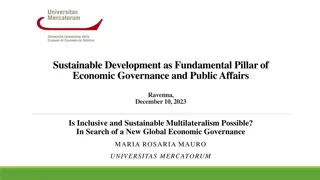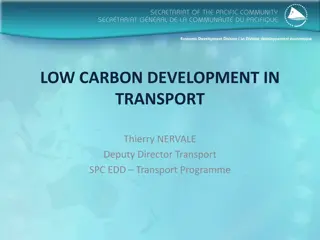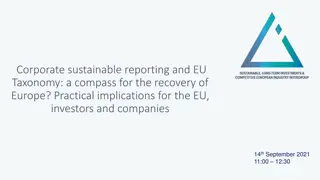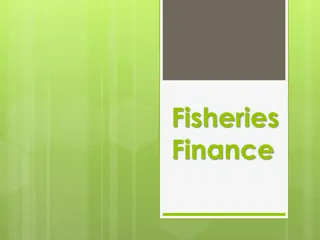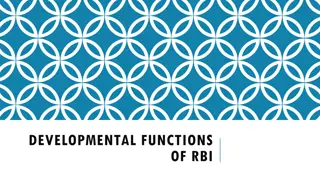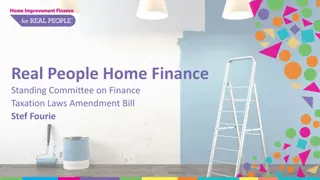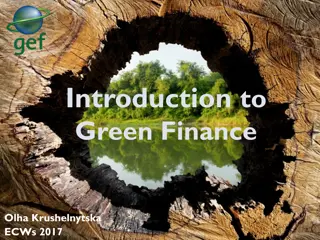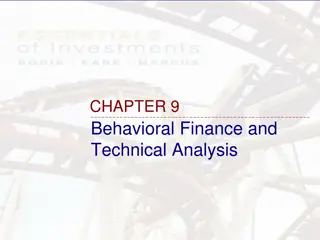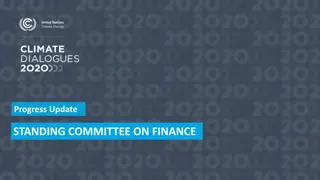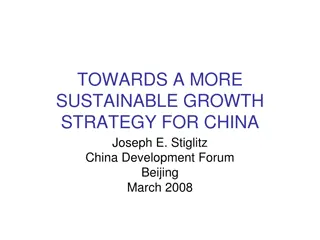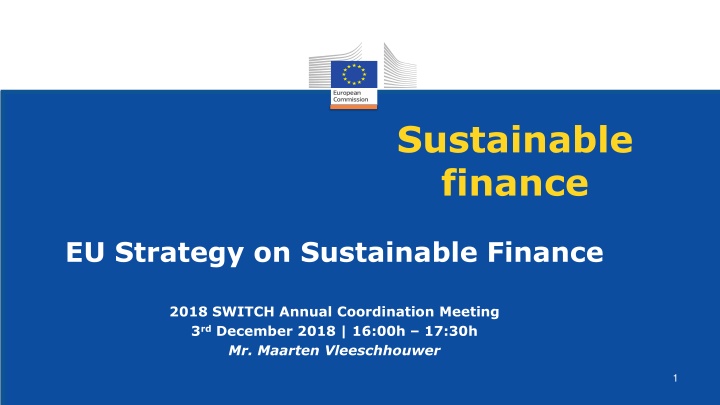
Sustainable Finance in EU: Strategies for Growth
The EU is committed to ambitious climate and energy targets for 2030 in line with the Paris Agreement. Sustainable finance plays a crucial role in achieving these targets by mobilizing public and private investments. Learn about the EU's sustainability policies, international initiatives, and the Action Plan on Financing Sustainable Growth.
Download Presentation

Please find below an Image/Link to download the presentation.
The content on the website is provided AS IS for your information and personal use only. It may not be sold, licensed, or shared on other websites without obtaining consent from the author. If you encounter any issues during the download, it is possible that the publisher has removed the file from their server.
You are allowed to download the files provided on this website for personal or commercial use, subject to the condition that they are used lawfully. All files are the property of their respective owners.
The content on the website is provided AS IS for your information and personal use only. It may not be sold, licensed, or shared on other websites without obtaining consent from the author.
E N D
Presentation Transcript
Sustainable finance EU Strategy on Sustainable Finance 2018 SWITCH Annual Coordination Meeting 3rdDecember 2018 | 16:00h 17:30h Mr. Maarten Vleeschhouwer 1
The Case for Sustainable Finance The EU committed to three ambitous climate and energy targets for 2030 in line with the Paris Agreement At least 30% energy savings compared with the business-as-usual scenario Minimum 40% cut in greenhouse gas emissions compared to 1990 levels At least a 27% share of renewables in final energy consumption 185 - 290bn of yearly investment is needed to reach these targets Public money Private money Private and public sector need to make a common effort to reach the EU s energy and climate targets.
Sustainable Finance in EU Sustainability policies EU Sustainability Policies Climate and Energy Investment and Growth Sustainable Finance Environment Circular Economy Action Plan European Fund for Strategic Investments 2030 Climate and Energy Framework Sustainable Finance within the Capital Markets Union 7th Environmental Action Programme Horizon 2020 Energy Union Sustainable Finance is one of the EU Sustainability Policy Pillars.
Sustainable Finance at the International Level FSB -TCFD: Industry-led task force on climate-related financial disclosures (TCFD) G20: Sustainable Finance Study Group Banks and Central Banks: Sustainable Banking Network, Network for Greening the Financial System, Sustainable Insurance Forum United Nations: Environmental Programme Financial Initiative Cities: International Network of Financial centres Numerous international initiatives have indorsed Green or Sustainable Finance on different levels.
Action Plan on Financing Sustainable Growth HLEG recommendations Action Plan Develop a sustainability taxonomy at the EU level by 2020, starting with climate change Clarify investor duties regarding sustainability in selected number of provisions (on a case-by-case basis), based on following principles Upgrade disclosure rules to make sustainability risks fully transparent, starting with climate change Enable retail investors to invest and benefit from sustainable finance opportunities Develop and implement official European sustainability standards, starting with green bonds. Introduce during 2018 an official European standard for green bonds Establish a Sustainable Infrastructure Europe facility to expand the size and quality of the EU pipeline of sustainable assets Encourage sustainable finance excellence by reforming the governance, financial culture and leadership of corporations Include sustainability in the supervisory mandate of the ESAs and extend the horizon of risk monitoring
Action Plan on Financing Sustainable Growth One comprehensive strategy | Three main objectives 1 3 2 Reorienting capital flows Mainstreaming Sustainability Fostering transparency and Long-termism towards sustainable investment into risk Management
Action Plan on Financing Sustainable Growth One comprehensive strategy | Three main objectives | Ten Actions 2 1 3 Reorienting capital flows towards sustainable investment Mainstreaming Sustainability into risk Management Fostering transparency and Long-termism Actions 1 Establish EU Sustainable Taxonomy COM is progressively developing the EU taxonomy. The details are being developed by the Technical Expert Group (TEG) that assists the Commission since Q2 2018. 2 Create Standards and Labels COM explores the use of the EU Eco-Label framework for green financial products. By Q2 2019, the TEG will prepare a report on an EU green bond standard building on current best practices. 3 Foster Investment in Sustainable Projects COM will take further measures that will improve the efficiency and impact of instruments aiming at investment support. 4 Incorporate Sustainability in Investment Advice COM will ensure that advisors will take into account the sustainable preference of clients. 5 COM will increase the transparency of sustainability benchmarks. The TEG is currently assisting the Commission in developing minimum standards for low-carbon benchmarks and minimum disclosure requirements for ESG benchmarks. Develop Sustainability Benchmarks
Action Plan on Financing Sustainable Growth One comprehensive strategy | Three main objectives | Ten Actions 2 1 3 Reorienting capital flows towards sustainable investment Mainstreaming Sustainability into risk Management Fostering transparency and Long-termism Actions 6 Integrate ESG in Ratings and Market Research COM will explore how to integrate sustainability factors in the credit rating assessment and analyze how the sustainability ratings and research market could be enhanced. 7 COM is working on how to clarify the duties of asset managers, pension funds and insurance companies to ensure they consider ESG factors in their investment decision process and are more transparent towards end-clients. Clarify institutional investors and asset managers duties 8 Incorporate sustainability in prudential requirements COM will explore the feasibility of a supporting factor when it is justified from a risk perspective to safeguard financial stability. 9 COM evaluates the current reporting requirements for companies. COM will update guidelines on climate disclosures, and establish new laboratory on corporate reporting. COM will analyze impact of accounting rules (IFRS standards) on sustainable and long-term investments. Strengthen Sustainability Disclosure & Accounting 10 COM is exploring how to improved corporate governance can enhance sustainability and is collecting evidence from the ESAs on short term market pressure arising from capital markets. Foster Sustainable Corporate Governance
Sustainable finance 2018 SWITCH Annual Coordination Meeting 3rd December 2018 | 16:00h 17:30h Q&A 9
The three legislative Proposals The most urgent actions from the AP were taken forward as legislative Proposals in May 2018. 1 Taxonomy Proposal: Proposal setting out criteria to determine the environmental sustainability of an economic activity ('taxonomy'). Establish EU Sustainable Taxonomy Benchmark Proposal: Proposal to create two new categories of benchmarks: (i) a low-carbon benchmark, (ii) and a positive-carbon impact benchmark as well as minimum disclosure requirements for ESG benchmarks. 5 Develop Sustainability Benchmarks 7 Disclosure Proposal: (i) introduce consistency on how institutional investors and asset managers should integrate sustainability in investment decision-making processes; (ii) increase transparency towards end-investors. Clarify institutional investors and asset managers duties 4 Incorpoate Sustainability into Financial advice The Commission has also launched a consultation to assess how to include ESG considerations into investment advice. 1 2 3 Reorienting capital flows towards sustainable investment Mainstreaming Sustainability into risk Management Fostering transparency and Long-termism
Taxonomy - The Case for an EU Taxonomy Value-add of the taxonomy for the market practice Current market practice Establish an EU Sustainable Taxonomy Different taxonomies among different Member States and financial institutions Provide appropriate signals and more certainty to economic actors. Costly to raise capital for real economy Bridging the gap by developing Protect private investors and mitigate the risk of greenwashing. Burdensome to check and compare information for investors a harmonized list of economic activities that can be considered environmentally sustainable Make it easier to raise capital. Adress and avoid market fragmentation and barriers to cross border capital flows. Costly for financial institutions to provide clarity on a voluntary basis Provide the basis for further policy action in the area of sustainable finance. for investment purposes. Hampering investments into a low-carbon economy Reorienting capital flows towards sustainable investment
Taxonomy - Some Features Focus not only on purely green sectors, but also set thresholds to enable the greening of polluting sectors Taxonomy Technical Screening Criteria Sector Framework Substantial Contribution Do no harm Dynamic character: The taxonomy will have to be kept up to date, taking into account the latest policy- and technological developments and innovation. Activity 1 Sector A Activity 2 Activity 3 Activity X Built as much as possible on existing initiatives Criteria per Activity: Threshold s, Principles, Metrics Do No Harm Evaluatio n/ Hotspot Analysis Activity 1 Sector B Activity 2 Activity 3 What s not green is not necessarily brown. Activities that are not on the list, are not necessarily polluting activities. Focus on activities that contribute substantially to environmental objectives. Activity X Activity 1 Sector X Activity 2 Activity 3 Activity X Granular enough to minimize ambiguity about "greenness" of an activity and flexible enough to cater to technological and market developments
The Benchmark proposal: The case for Benchmarks Added value of The COM Proposal Current market practice 5 Develop Sustainability Benchmarks Existence of many different so-called low-carbon Benchmarks but: Introducing minimum standards for the two categories of low-carbon benchmarks Mitigate the risk of greenwashing Not widely used by investors Bridging the gap by: Reliable reference tool for green investment strategies Lack of harmonization: Different categories of low-carbon indices Creating two categories of benchmarks: 1. Low Carbon benchmark (LCB) 2. Positive Carbon Impact benchmark (PCIB) Enhancing disclosure: Disclosure requirements for ESG benchmarks Significance in overall portfolio allocation remains limited Introducing minimum requirement on disclosure for ESG benchmarks Lack of transparency: benchmark methodologies sometimes lack appropriate disclosure which may lead to green washing Increase the level of transparency of ESG benchmarks Hindering market development Reorienting capital flows towards sustainable investment

